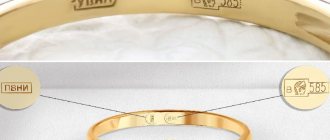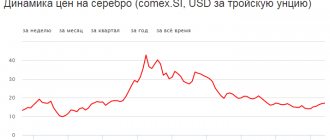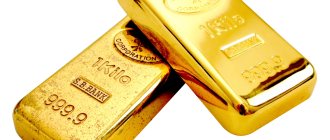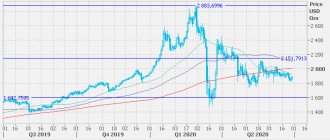19.09.2021
The price of silver rose sharply in early September, approaching its highest level in a month, but it was unable to maintain its gains and fell quickly.
Silver rose from $23.84 on September 2 to $24.80 on September 6, but returned to $23.80 ten days later.
Silver chart
The precious metal hit an eight-year high in February 2021, hitting $30 an ounce for the first time since 2013, but the commodity has struggled to find support since then. The price fell sharply in June and again in August as the US Federal Reserve (Fed) indicated it could begin tapering monetary stimulus by the end of this year. The price of silver has fallen by about 14.5% since the beginning of the year, having lost 6.3% in August alone, and stood at about 23 USD per ounce on September 17th.
What has stopped silver from rising sharply despite ongoing economic uncertainty that is expected to push up precious metals prices? What are the key market drivers and what are the prospects for the rest of the year?
Current Silver Price and Key Factors
As with gold, the silver market is widely viewed as a safe investment that acts as a way to hedge against economic uncertainty. By holding commodities such as precious metals, investors can insure their portfolio against declines in the value of stocks and bonds that might occur during a recession.
Silver is a store of value that has been used throughout history to make physical coins.
The price of silver initially fell in March 2021 as investors sold off assets and liquidated their positions. But the market quickly recovered as demand for silver took over due to the uncertainty created at the start of the COVID-19 pandemic. The metal's price more than doubled from $12.10 in March to $29.77 in August 2021 before falling to $21.90 in November as vaccine news came out, fueling optimism about economic recovery prospects . Silver is up an average of 47% in 2021 due to increased demand from investors along with supply disruptions as some silver mines were closed during COVID-19 restrictions.
Silver surged again in February as retail investors flocked to the market expecting the price to rise in response to rising inflation following economic stimulus packages aimed at reviving economies from the pandemic. But expectations for a global economic recovery and concerns about the impact of monetary tightening by the US and other central banks in 2021 limited silver's gains.
The US Federal Open Market Committee (FOMC) meeting in June weighed on precious metals prices as the central bank showed a more hawkish stance than the market had expected on the prospect of higher interest rates.
This makes investing in silver an important way for investors to manage their portfolio in light of macroeconomic factors that influence the performance of the global economy.
Physical consumption
Unlike gold, which is primarily used in jewelry and as an investment asset, more than half of silver's annual demand is for industrial use. Silver is ductile, making it ideal for making jewelry, but it is also a good conductor of electricity and is therefore widely used in electronics.
The use of silver in various industries affects the price of silver: when industrial activity increases, the price rises due to high demand, while a decrease in activity, such as during a recession, reduces the price of the precious metal.
For this reason, monthly Manufacturing Purchasing Index (PMI) data around the world is an important indicator of demand for silver, as it serves as an indicator of manufacturing activity.
The global PMI, compiled by JP Morgan and IHS Markit, fell to a six-month low of 54.1 in August 2021 from 55.4 in July as manufacturing growth lost momentum in several major markets (a number above 50 indicates expansion in manufacturing activity, while the below – for reduction). Despite the loss of ground, the global PMI remained above 50 in August, thus recording the 14th month of recovery.
Silver demand, million ounces
The transition to clean energy around the world is expected to drive physical demand for silver in the coming years, such as in the production of electric vehicles. Solar panels accounted for about 20% of industrial silver demand this year, according to Metals Focus. Demand in the solar energy sector rose 4% in 2020, even as overall silver demand fell 10% to 896.1 million ounces, reflecting the impact of the pandemic on industrial consumption. Demand for industrial silver fell 5% to 486.8 million ounces, a five-year low.
The rollout of fifth generation (5G) telecom networks is also set to become a growing source of demand as silver is used in telecom equipment.
Silver mining
Silver is usually mined as a by-product of gold, copper, zinc and lead. According to the Silver Institute, primary silver production accounted for only 27% of total production in 2020. This means that supply does not always respond to market fundamentals, and silver production could fall even if demand for it increases. This occurs if the prices of metals, which are mainly obtained from mines where silver is a by-product, decline, and vice versa.
Silver production fell 5.9% to 784.4 million ounces in 2020, the fourth straight year of decline and the biggest decline in more than a decade. This happened due to the temporary closure of mines during the lockdowns caused by the pandemic.
Mexico is the world's largest silver producer, accounting for almost 23% of the world's supply. Production was suspended in Mexico in April and May 2021, contributing to a decline in global supplies. Production also fell in Peru, the world's second-largest source of mined silver, while Chile increased output through shorter lockdowns.
Largest silver producers
The supply of silver from mines around the world affects the price, as with other commodities: less supply keeps prices higher, and more supply impacts the market. After falling 6% last year, production is forecast to increase 8% in 2021 to 848.5 million ounces, according to the Silver Institute.
Investment demand
Silver's status as a safe-haven commodity makes investor demand a key driver of price growth. This was evident in 2020 when the price of silver rose despite a decline in physical demand that outpaced the decline in supply.
Net investment in silver exchange-traded products (ETPs) rose 298% in 2021 to 331.1 million ounces, with global ownership topping one billion ounces for the first time since the first ETP launched in 2006, according to the Silver Institute.
Investment demand for silver is driven by factors such as the value of the US dollar, interest rates and inflation, as well as geopolitical events, which allow investors to determine the state of the global economy and diversify their portfolios.
Low interest rates and a weaker US dollar make silver more attractive because it retains its value as an asset, while a stronger dollar and higher interest rates make silver less attractive because investors are not earning interest on their holdings. Some investors prefer to buy silver over gold because it is more affordable, especially if they are buying the physical metal.
No particular volatility
You shouldn’t attach much importance to volatility in the silver market, believes Nikolai Pereslavsky, an employee of the department of economic and financial research at the CMS Institute. The current situation is more like a slight deviation from the trend against the backdrop of a strengthening dollar and growing interest in gold. In addition, the decline in the price of silver was not out of the ordinary - only 1.41% for the week and closing on Friday at $26.09 per troy ounce. In addition, the expert notes, the metal is actively regaining its position. Therefore, some correction in silver can be perceived as a purely technical issue - production in the world is being restored unevenly, so jumps are possible in the future.
Pereslavsky is confident that markets will gradually win back the fall in silver since mid-June, when the metal lost about 7% of its value. Quotes will be positively influenced by vaccination in producing countries - Russia, South Africa and other countries. At the same time, pressure on the metal will be exerted by the spread of the “delta” strain and a decrease in activity in
the production of 5G towers. It is necessary to evaluate both the end of the rally in the commodity markets and the gradual return of metal quotations to last year’s values, which also negatively affect the quotations of silver as an industrial metal.
Gold will await further developments regarding inflation, the spread of the new strain, as well as the results of quarterly reports of leading American banks and the Federal Reserve forum, which will be held in August in Jackson Hole. Until this time, any changes in quotes are unlikely, unless strict lockdowns happen again, the expert is sure.
One way or another, since the peak of the crisis in 2021, silver has more than doubled and, in theory, could reach $50 per ounce in the coming years with the development of 5G systems. Therefore, this metal can be a good investment in the long term, the expert concludes. At the same time, he adds, gold will gradually cease to be a speculative story and will once again acquire the status of a conditional “safe haven” with a small but constant annual increase in quotations. For conservative investors, this is what is more interesting.
Analysts' comments
| Analyst | date | A comment |
| Heraeus Precious Metals | September 6, 2021 | However, the chip shortage that has plagued the auto industry along with some other electronics segments means that despite expectations of higher electronics demand of around 315 million ounces this year, there is not yet as strong a recovery as initially forecast. “Semiconductor issues are limiting silver demand growth from electronics this year. On the other hand, smartphone sales continued to recover in the second quarter of 2021. However, the chip shortage that has plagued the auto industry along with some other electronics segments means that despite expectations of higher electronics demand of around 315 million ounces this year, there is not yet as strong a recovery as originally forecast.” |
| StoneX | September 13, 2021 | “With gold trading largely sideways, silver is underperforming, with its ratio now at 75.6, down from 73.7 a week ago. This makes sense as silver, in the absence of guidance from gold, is looking at the industrial outlook and the uncertainty caused by the coronavirus keeps sentiment neutral to mildly bearish. In India in particular, there is significant pent-up demand waiting in the wings, but the market is still very cautious. Lack of transport capacity is also keeping silver under pressure, as some deliveries now have to be made by air." |
| Zaner | September 14, 2021 | “Recent actions indicate signs of easing inflation, which in turn has undermined gold and silver prices. Silver trading has a different focus than gold trading, as the ebb and flow of physical demand is likely to dominate day-to-day activity in the upcoming trading sessions. Silver should have enough fundamentals to keep prices well above the key mid-August consolidation lows, down to $22.97.” |
Analysts at clearing house and liquidity provider Sucden Financial said in their third-quarter report: “We believe silver still has upside potential in the second half of this year, based on the continued recovery in industrial performance along with elevated inflation levels.
“However, this is unlikely to happen without problems. Interest rates as key drivers and silver's performance could be heavily impacted by interest rate movements and the success of vaccinations, as a subsequent rise in interest rates could continue to pose headwinds for silver. This is consistent with silver's historical behavior during periods when monetary policy tightens, often leading to price pullbacks."
Analysts at Jefferies have a base case forecast for silver that puts the long-term price at an average of $20 per ounce. There is a bullish scenario with a rise to $35/oz where silver averages $30/oz over the long term, and a bearish scenario where silver falls to $15/oz with no improvement thereafter.
Should you buy silver?
There are several reasons why investors choose to have silver in their portfolios.
Hedging against falling stocks and bonds
Investors have traditionally held a small portion of their portfolios in gold and silver to hedge against price volatility in other assets. Gold and silver can maintain their value even when stock and bond prices fall during recessions and periods of economic uncertainty.
Long-term demand growth
Long-term trends such as the transition to solar power generation, electric vehicles and 5G telecommunications networks are expected to increase demand for silver through the production of solar panels, electronics and electrical components. This could tighten the supply-demand balance and lead to higher silver prices in the coming years.
Decrease in production volumes
At the same time, as demand is expected to increase, the long-term supply of silver in the mining industry is projected to decrease due to lower ore grades, which will reduce the rate of silver production from mines. There are not enough new mining projects that could come online in the next few years, and new deposits could take decades to open.
High liquidity
Since it is one of the most actively traded commodities in the world, it is easy to trade physical silver or invest in silver mining stocks whenever you want to get in or out of the market.
Tight spreads mean investors can always buy and sell at prices close to the market.
Should you sell silver?
There are reasons why investors might want to limit their positions in silver or even go short the metal.
Tightening monetary policy
The near-term outlook for silver prices in 2021 is becoming increasingly uncertain. While traders and investors expected the price to continue the eight-year rally seen earlier in the year as a result of rising inflation and ongoing COVID-19 uncertainty, the price of silver has come under pressure.
The decline in silver prices was driven by concerns that the US Federal Reserve and others such as the European Central Bank could raise interest rates sooner than previously thought, reducing investment demand for the precious metal.
Market volatility
Although silver sells for much lower prices than gold, its price is much more volatile. This may not be suitable for investors looking for stable investments. Sharp price fluctuations create opportunities for large profits, but they also increase the risk of large losses.
QUESTIONS AND ANSWERS
Why is silver worth less than gold?
Silver is trading at a deep discount to gold because there is a more affordable supply. There is less gold in the ground than silver, so less gold is mined. About 3,300 tons of gold were mined globally in 2021, compared to 27,000 tons of silver, according to the US Geological Survey. At the same time, gold is more valuable than silver as a form of currency, and investors and central banks prefer gold to silver as a hedge.
What makes silver rise and fall?
The price of silver typically moves in tandem with the price of gold in response to macroeconomic factors. Higher interest rates and a stronger US dollar tend to put pressure on the price of gold, while higher inflation, lower interest rates and a weaker dollar provide support. There are more industrial uses for silver than for gold, so global industrial production can also influence the price of silver.
How much will silver be worth in 2030?
Some analysts predict that the price of silver will remain under pressure in the short term. Looking to the future, the Coin Price Forecast shows that the price of the metal could exceed $60 per ounce. At the same time, it is critical to keep in mind that analysts and algorithm-based forecasting services may be wrong in their forecasts. You should always do your own research.
Will silver prices rise in the future?
Whether the price of silver will rise depends on the US Federal Reserve's policies on interest rates, inflation, as well as the strength of the US dollar. Supply and demand will also be key factors as both mining and industrial production recover from disruptions during the Covid-19 pandemic.
Large silver holders on metal
Thomas Kaplan, founder of Electrum Group
Investments in silver helped Kaplan become a billionaire. Electrum Mines controls mining operations with resources totaling more than one billion ounces of silver. Kaplan believes that the price of silver could rise to $100 in the long term. He told Kitco in December 2021:
“Once silver stabilizes and gold rises as one of the monetary metals, silver then follows gold and then it gains octane and surpasses gold. This is what happened during the financial crisis and we are starting to see it again."
Warren Buffett, co-founder of Berkshire Hathaway
Billionaire investor Warren Buffett's Berkshire Hathaway fund bought 129.7 million ounces of silver in 1997 and early 1998, betting that dwindling inventories with outpacing demand for production and refining could only be addressed by rising silver prices.
Buffett said in his 1997 letter to shareholders:
“Marketed, this position generated pre-tax earnings for us of $97.4 million in 1997.” In some ways, this is going back in time for me: thirty years ago, I bought silver because I was expecting it to be demonetized by the US government. Since then I have followed the silver data, but I have not owned it.”
Berkshire Hathaway sold its assets in 2006 for a much higher price.
JP Morgan
US investment bank JP Morgan owns one of the world's largest reserves of silver. Data from the COMEX Futures and Options Market shows that JP Morgan holds about 50% of the physical silver bar inventory held in exchange warehouses, amounting to about 184.5 million ounces. With silver prices around $23.50 an ounce, reserves were valued at about $4.3 billion.
Where to buy silver
For a private investor, there are 3 options for investing in silver.
- purchase of bullion and silver coins. But here you need to keep 2 things in mind. Firstly, you won’t buy a lot of silver. After all, it must then be stored somewhere in a place protected from thieves. At home is not an option, and if you rent a safe deposit box, then this is an additional expense. Secondly, when buying bullion, you will significantly overpay, because the price is determined by volume, i.e. the price for a 100 gram ingot will be significantly higher than for a 10,000 kg ingot. And upon sale you will be charged a tax of 18%.
- Compulsory medical insurance - impersonal metal accounts. Here you can buy silver from 1 gram. Although the quotes differ from the world ones, they are very close to them. Here, first of all, you need to pay attention to the difference between buying and selling (spread). The lower it is, the better for you. Read more about this here...
- ETF - Buying silver through an ETF, while reliable, is not as easy as the first 2 methods. It is not yet possible to invest in silver through ETFs on the Russian market (there is only gold). Therefore, it remains to buy through foreign brokers.
Silver price history
Silver has been mined and used to make coins for thousands of years. The center of world production shifted from Turkey and southern Europe to Latin America following the discovery of the metal by European explorers. Bolivia, Peru and Mexico accounted for more than 85% of the world's silver production between the 16th and 19th centuries.
Manufacturing continued to expand, and industrialization increased the use of metal. Production during the last 25 years of the 19th century quadrupled from the first 75 years to nearly 120 million ounces per year. World production increased by another 50% between 1900 and 1920 to approximately 190 million ounces following the discovery of new silver reserves in various countries in the Americas, Europe and Asia.
The 1900s also saw the development of new mining methods that increased the efficiency and productivity of the deposits.
The silver price chart shows that the market rose sharply after the American Civil War as the increased supply of currency to finance the war increased the attractiveness of gold and silver.
The crash of 1929 and the subsequent Great Depression caused the price of silver to fall to an all-time low of $0.25 per ounce in 1932 and 1934. But it soon recovered, and the 1979 oil crisis triggered a rise in commodity prices, causing the price of silver to skyrocket, from $5 per ounce to a record high of $49 per ounce. The price of silver set a new high above 49 USD per ounce in April 2011 in response to the US debt limit crisis.
The market subsequently pulled back, and then the COVID-19 pandemic caused the price of silver to surge to an eight-year high, exceeding $30 per ounce in February 2021.
Silver historical chart
About silver: results
Although silver was not used as a currency in the same way as gold, it was used to mint coins for centuries and still has value as a precious metal.
Investors can purchase physical silver coins and other forms of bullion, or invest in various financial assets such as exchange-traded funds or shares of silver mining companies.
Silver is also valued in the production of jewelry.
Silver is also used in industrial products much more widely than gold, making silver investing a key way for investors to gain exposure to global manufacturing activity in their portfolios.
Investing in silver allows investors to hedge their portfolios against low interest rates and the decline in the value of the US dollar, as silver tends to maintain its value over time and is seen as a safe investment.
Traders and investors often look at the gold/silver ratio—the number of ounces of silver required to purchase an ounce of gold—to determine whether silver is considered undervalued or overvalued at any given time.
The silver market is expected to decline over the long term as demand for solar panels, which already accounts for a large share of consumption, is expected to rise due to the trend towards lower carbon emissions worldwide. Silver is also used in large quantities in electric vehicles and 5G telecommunications networks.
0
Author of the publication
offline 1 year
Current stocks
Silver is constantly consumed in industry and, unlike gold, is practically not stored in the form of reserves. Gold, of course, is also used for production, but its main purpose is the gold and foreign exchange reserves of countries. Almost every country has such reserves. And he strives to increase them.
For example, a list of countries with the largest gold reserves:
- USA - 8,133 tons
- Germany - 3,380
- Italy - 2,551
- France - 2435
- China - 1762
- Russia - 1414
- Switzerland - 1040
- Japan - 765
- Holland - 612
- India - 557
Now remember if you know about the silver reserves of countries. I personally don't. The bulk of silver is spent in the production of goods, either jewelry and silver coins. Every year, the consumption of silver in industry is only growing, and its reserves are constantly decreasing. Accordingly, if there is a shortage of silver, the price, according to market law, will increase.










